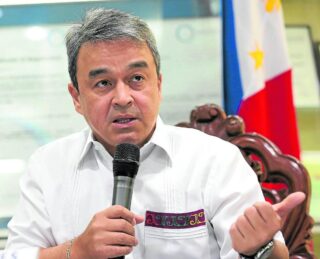The government will float $2 billion in dollar-denominated bonds in the coming days in line with its plan to raise the foreign component of the total state borrowings this year.
Deputy Treasurer Sharon P. Almanza told reporters last week that the Bureau of the Treasury was “almost” ready to launch the ROP bonds, but it would still depend on market conditions.
National Treasurer Rosalia V. de Leon had said the US Securities and Exchange Commission was looking at reviewing the Philippine government’s shelf filing as it usually did whenever there was a change in the administration, which it was unable to do in 2017.
“Sometimes they will look into the reforms, the accomplishments done by the previous administration, and find out if there will be continuity in the policy,” de Leon explained.
But Almanza said the US SEC would no longer conduct a full review of the shelf registration.
Half of the $2 billion proceeds of the planned global bond sale would be for liability management. The other half would be new money, Almanza said.
Treasury officials had said the increase in the new money component of the upcoming dollar bond issuance—more than the usual $500 million in recent years—would will augment the financing of the government’s higher infrastructure spending requirements under the ambitious “Build, Build, Build” program.
Before 2017 ended, economic managers raised the share of foreign borrowings in this year’s financing program on the back of the government’s upcoming foray in the Chinese and Japanese debt markets.
The Cabinet-level Development Budget Coordination Committee last December raised to 26 percent the share of external borrowings in 2018 from 20 percent previously, while it kept the 80-20 ratio in favor of domestic sources from 2019 to 2022.
Finance Secretary Carlos G. Dominguez III had said the share of foreign borrowings for this year was increased due to the upcoming global bond sale as well as the planned “panda” and “samurai” bond issuances in China and Japan, respectively.
Dominguez had noted that 2018 would be a good time to tap global debt markets before the US Federal Reserve again hike interest rates.
As for the planned panda bond sale, Dominguez had said it was pushed back to this year from an earlier plan to do so last year as the Treasury was still awaiting final approval from the People’s Bank of China.



